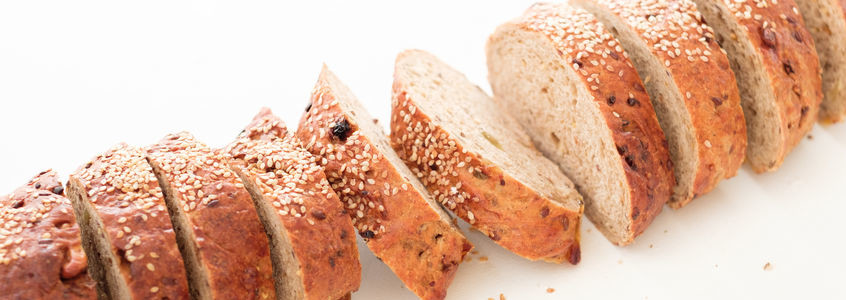
Brought to you from IBIE 2019
With all the products, ingredients, and demos at IBIE 2019, there was a lot of bread. Which may be surprising with the rise of gluten-free, low-carb diets. But the baking industry knows that bread is making its comeback, and that this world-wide staple has a lot to offer.
One of the more successful ways of marketing bread is including more functional ingredients, making high fiber or high protein claims. But what are ways that bread alone is good for us? At the Artisan Marketplace Stage, hosted by Puratos, Tom Gumpel with MDJ Baking Inc. shared insight into getting the most nutrition out of bread.
The health benefits of whole grains
One of the main champions of the health value of bread is of whole grains. While this staple adds nice flavor and texture, grains also provide probiotics and prebiotics to help with gut health. Whole grains are also known to help with cardio health and lower glycemic response.
Another side of whole grains is the benefit of ancient grains or fresh milling. While these may not have as much proven health benefits, they do create a more natural, less-processed product for consumers focused on this aspect.
However, there’s a lot more we can do to improve the benefits of bread. The secret is in the transformation.
Fermentation and sourdough
Sourdough bread has been growing in popularity for it’s artisan feel, and simple ingredient list. But could it also hold the secret of healthier bread? The fermentation process allows water and flour to sit together for long periods of time. Aside from adding flavor, it can improve the health benefits of bread by:
- Breaking down carbs like FODMAPS
- Reducing proteins to into amino acids
- Making it edible by gluten-sensitive people
Looking to bake your own long-fermented bread or sourdough? Check out this free download on making artisan bread!
Sprouted Grains
A way of unlocking the nutrition of grains is by sprouting them. By soaking them in water and allowing them to germinate, you can improve the bioavailability of bread. Aside from a delicious flavor and soft texture, here are some other benefits:
- High in protein, vitamins, antioxidants
- Very, very high in natural prebiotics and probiotics
- Can be gluten-free
- Can be sourced organically
The legacy of bread
As different low and no carb diets come and go, there are still plenty of reasons to eat bread. However, as we learn more about the science behind grains and fermentation, we’ll find more ways to unlock the powerful health benefits of bread.

